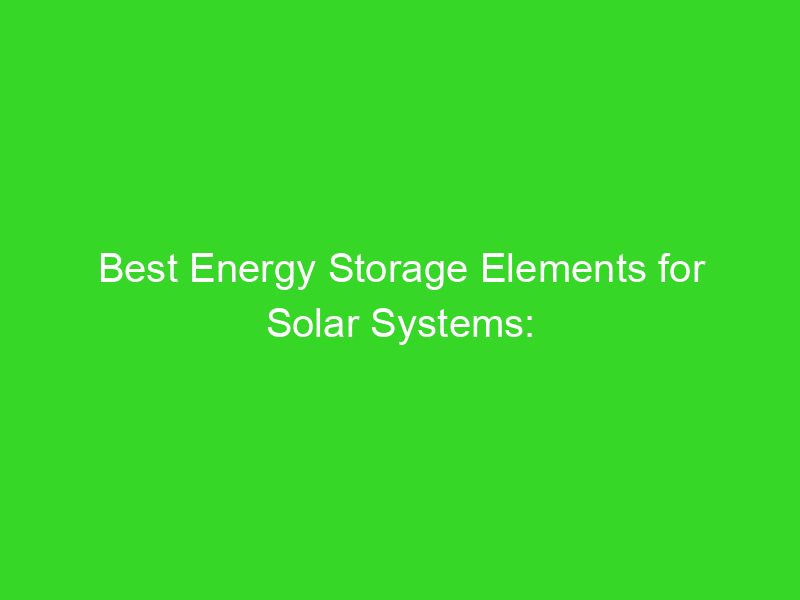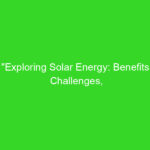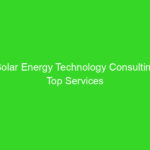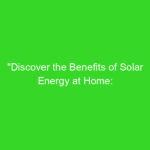
Which of the Following is the Best Example of an Energy Storage Element in a Solar Energy System?
Solar energy systems are becoming increasingly popular as a way to generate clean and renewable energy. However, one of the main challenges of solar power is that it is an intermittent source of energy, meaning that it is only available when the sun is shining. To overcome this issue, energy storage elements are essential components of a solar energy system. These elements store the excess energy generated during the day for use during the night or when the sun is not shining. In this article, we will explore the best examples of energy storage elements in a solar energy system.
Batteries
Batteries are one of the most common energy storage elements used in solar energy systems. They store excess electricity generated by solar panels during the day and release it when the sun is not shining. Batteries are available in a variety of types and sizes, including lead-acid, lithium-ion, and saltwater batteries. Lithium-ion batteries are the most popular type used in solar energy systems because they are efficient and have a long lifespan.
Capacitors
Capacitors are another type of energy storage element used in solar energy systems. They store energy in an electric field and release it when needed. Capacitors are smaller and lighter than batteries, making them ideal for portable solar energy systems. However, capacitors have a lower energy density than batteries, meaning they cannot store as much energy.
Flywheels
Flywheels are mechanical energy storage elements that store energy in the form of kinetic energy. They consist of a spinning wheel that stores energy when it is rotated by a motor. Flywheels are efficient and have a long lifespan, making them a popular choice for large-scale solar energy systems. However, flywheels are expensive and require a lot of maintenance.
Hydrogen Fuel Cells
Hydrogen fuel cells are a unique energy storage element that converts solar energy into hydrogen gas, which can be stored and used to generate electricity later. Hydrogen fuel cells are efficient and have a high energy density, making them an ideal choice for long-term energy storage. However, they are expensive and require special equipment to store and transport the hydrogen gas.
Conclusion
In conclusion, energy storage elements are essential components of a solar energy system. Batteries are the most common type of energy storage element used in solar energy systems, but capacitors, flywheels, and hydrogen fuel cells are also viable options. Each storage element has its pros and cons, and the choice will depend on the specific needs of the system. By incorporating energy storage elements, solar energy systems can provide a reliable source of clean and renewable energy, even when the sun is not shining.





